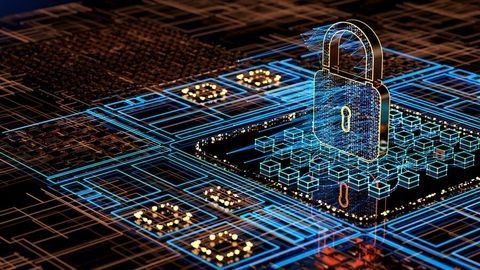Proposed Rule from Commerce on National Security Guardrails for CHIPS Act Funding: Restrictions on China and other Countries of Concern
What You Need to Know
Key takeaway #1
Wide Scope: Commerce explicitly noted that these rules are intended to be wide in scope, and even the use of an exception would require notification to Commerce.
Key takeaway #2
Application to Affiliates Under Common Control: These controls apply to the person receiving the funds, its parent entity, its subsidiaries, and anyone under common control. Based on the current definitions, if one portfolio company of an investment fund received CHIPS Act funding, other portfolio companies could be subject to these controls as well.
Key takeaway #3
Listing Facilities: For a facility to qualify as an existing facility, Commerce must be notified in advance. For those persons considering applying for CHIPS Act funding, they should take stock of current facilities that may be covered and their current outputs.
Client Alert | 7 min read | 03.29.23
The U.S. Department of Commerce (“Commerce”) is seeking public comment on how to protect national security while boosting investment in the domestic semiconductor manufacturing industry as part of a new financial incentive program established under the CHIPS and Science Act. Commerce has issued a proposed rule (the “Proposed Rule”) that would define key terms used by the incentives program, such as “legacy semiconductors” and “semiconductor manufacturing,” while also outlining the criteria Commerce would use to claw back funding from companies that make certain investments in semiconductor manufacturing in China and other foreign countries of concern.
Overview of CHIPS Act
The proposal follows Commerce’s announcement last month that it would begin accepting applications for CHIPS Act assistance on a rolling basis beginning March 31, 2023 for leading-edge manufacturing facilities, and June 26, 2023 for current-generation, mature-node, or back-end manufacturing facilities. The CHIPS Act will provide nearly $39 billion in direct funding and $75 billion on loans and loan guarantees to support the construction, expansion, or modernization of a domestic semiconductor manufacturing facility, or equipment for that facility; support workforce development for a domestic semiconductor manufacturing facility; or pay reasonable operating expenses for a domestic semiconductor manufacturing facility, as determined by the Commerce Department.
However, the CHIPS Act imposes two main national security restrictions on any recipients of program funding: recipients are restricted from investing in advanced semiconductor manufacturing in foreign countries of concern for 10 years; and recipients may not engage in national security-adjacent joint research or technology licensing efforts with a foreign entity of concern. If funding recipients violate either of these prohibitions, they are subject to a “clawback” of the full amount (plus interest) of any provided funding. The law left several key program terms and procedures undefined and up to Commerce to decide, including which semiconductor technologies are critical to national security and cannot be exported to foreign companies of concern by program participants. The Proposed Rule provide additional details and key definitions for these “national security guardrails.”
These rules are wide reaching, and purposefully so, according to Commerce. We recommend any person considering applying for funding to understand if receiving funding will affect their current operations in China, or affiliate companies, in case an exception is available (which will require reporting to Commerce). Finally, because this is a Proposed Rule, Commerce has asked for comments in 60 days, but did not set out a time for issuing final rules.
Concurrent with this proposal, the Treasury Department (“Treasury”) and IRS issued a proposed rule for implementing a new section 48D tax credit for investment in semiconductor manufacturing under the CHIPS Act. To learn more, click HERE.
Prohibition on Expanding Facilities for Advanced Semiconductor Manufacturing
Prohibited Activity
The CHIPS Act prohibits, among other things, funding recipients or their “affiliates” from engaging in “significant transactions” involving the “material expansion” of “semiconductor manufacturing capacity” in a foreign country of concern (i.e. China, Russia, Iran, or North Korea) for 10 years, once the funding agreement is finalized. The Proposed Rule provides the key definitions:
- “Affiliate” means any direct or indirect subsidiary, parent, or affiliate (it shares a common parent of the funding recipient) of the funding recipient. Each is determined based on a 50% voting ownership threshold.
- “Significant transaction” means transactions with an aggregate monetary value of $100,000 or more. This can include mergers, acquisitions, or takeovers (e.g., or consolidations, joint ventures, long-term leases) or any other investments (e.g., capital expenditures, formations of subsidiaries).
- “Material Expansion” means when the significant transaction has either the purpose or the effect of expanding an existing facility's production capacity, in the aggregate, by more than five (5) percent, compared to that facility’s product when the funding agreement was finalized.
- “Semiconductor Manufacturing Capacity” means semiconductor fabrication and/or packaging, and includes both front-end fabrication as well as back-end manufacturing (assembly, testing, and packaging of semiconductors).
Exceptions
Under the proposal, Commerce would allow funding recipients to make limited investments in an “existing facility” for “legacy semiconductors” (which the funding recipient will need to identify to Commerce prior to finalizing the agreement to receive funding) or a new facility that produces “legacy semiconductors,” that “predominately serves the market,” i.e., 85% of the output (or more) of that facility will be incorporated into final products for use in China, Russia, Iran, or North Korea.
Legacy Semiconductors
The proposal includes definitions for legacy semiconductors but clarifies that Commerce has discretion to designate certain legacy technologies as “semiconductors critical to national security” that may still trigger the clawback provisions. Currently, “legacy semiconductors” is defined to include two type of semiconductors:
- A digital or analog logic semiconductor that is of the 28-nanometer generation or older (i.e., has a gate length of 28 nanometers or more for a planar transistor); and
- A memory semiconductor with a half-pitch greater than 18 nanometers for Dynamic Random Access Memory (DRAM) or less than 128 layers for Not AND (NAND) flash that does not utilize emerging memory technologies, such as transition metal oxides, phase-change memory, perovskites, or ferromagnetics relevant to advanced memory fabrication.
In addition to providing the definition of a legacy semiconductor, the Proposed Rule is explicit as to what is not covered, such as:
- A semiconductor with a post-planar transistor architecture (such as fin-shaped field field-effect transistor (FinFET) or gate all around field-effect transistor); and
- “Semiconductors critical to national security,” listed as:
- Compound semiconductors;
- Semiconductor utilizing nanomaterials, including 1D and 2D carbon allotropes such as graphene and carbon nanotubes;
- Wide-bandgap/ultra-wide bandgap semiconductors;
- Radiation-hardened by process (RHBP) semiconductors;
- Fully depleted silicon on insulator (FD-SOI) semiconductors;
- Silicon photonic semiconductors;
- Semiconductors designed for quantum information systems; and
- Semiconductors designed for operation in cryogenic environments (at or below 77 Kelvin)
What Happens in the Event of a Violation
The Proposed Rule also establishes a process by which Commerce, in coordination with the Department of Defense and Director of National Intelligence, can review transactions that may be prohibited by the above restrictions. Commerce will notify the funding recipient of the review, potentially ask for additional information, and within 90 days, provide an initial determination whether a violation has occurred. The funding recipient will have 14 days to ask Commerce to reconsider, to which Commerce will issue a final determination.
After issuing its final determination, Commerce will either require the funding recipient to return the full amount provided, with interest, or waive the clawback and potentially require other mitigation requirements.
Prohibition on Joint Research and Technology Licensing Efforts
Prohibited Activity
As noted, the CHIPS Act also restricts funding recipients and their affiliates from engaging in “joint research” or “technology licensing” efforts with a “foreign entity of concern” related to a “technology or product that raises national security concerns.” The Proposed Rule provides the key definitions for this restriction:
- “Joint Research” means any research and development undertaken by two or more persons;
- “Technology Licensing” means an agreement to make patents, trade secrets, or know-how available to another party.
- “Foreign Entity of Concern.” This term was already defined to include “foreign entities” (i) on the SDN List administered by Treasury, (ii) designated foreign terror organizations, (iii) having been convicted under a number of U.S. espionage, export control, and sanctions laws, or (iv) owned by, controlled by, or subject to the jurisdiction or direction of the Chinese, Russian, Iranian, or North Korean governments or political parties.
- In the Proposed Rule, Commerce clarifies that persons described in (iv) include persons that are (a) citizens, nationals or residents of that country; (b) persons organized under the laws or has its principal place of business in that country; (c) at least 25% of that person’s voting interest is held by that government or political party.
- Commerce also added to this definition: persons on Commerce’s Entity List, Treasury’s Chinese Military Industrial Complex Companies (“CMIC”) List, and persons on the FCC’s Trusted Communications Network Act.
- “Technology or Product that Raises National Security Concerns” means any “semiconductors critical to national security” (see above), or any item in Category 3 of the Commerce Control List that are controlled for “National Security” or “Regional Security reasons.”
What Happens in the Event of a Violation
The Proposed Rule creates a distinct process for a violation of the joint research and technology licensing criteria. Here, Commerce will also notify the funding recipient but is not bound to give an initial determination in 90 days. However, once Commerce issues an initial determination, the funding recipient will have 14 days to ask Commerce to reconsider as well, to which Commerce will issue a final determination.
Unlike the semiconductor facility expansion prohibition, Commerce is unable to waive the clawback provision and impose distinct mitigation measures.
Contacts
Insights
Client Alert | 4 min read | 07.07.25
DOJ Data Security Program Update: Active Enforcement Begins This Week
The U.S. Department of Justice’s (DOJ) reprieve on civil enforcement of its Data Security Program (DSP), which imposes sweeping restrictions on bulk data transfers by U.S. entities to certain “countries of concern” and “covered persons,” is set to expire on July 8, 2025.
Client Alert | 9 min read | 07.07.25
Client Alert | 4 min read | 07.02.25




